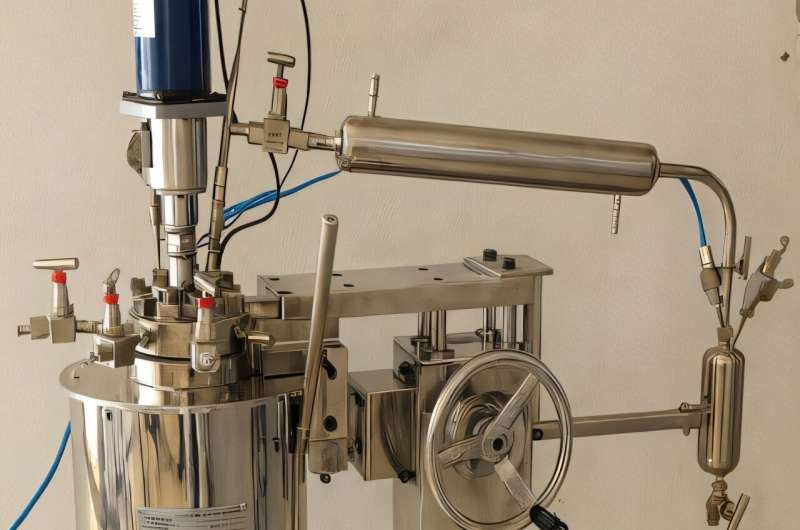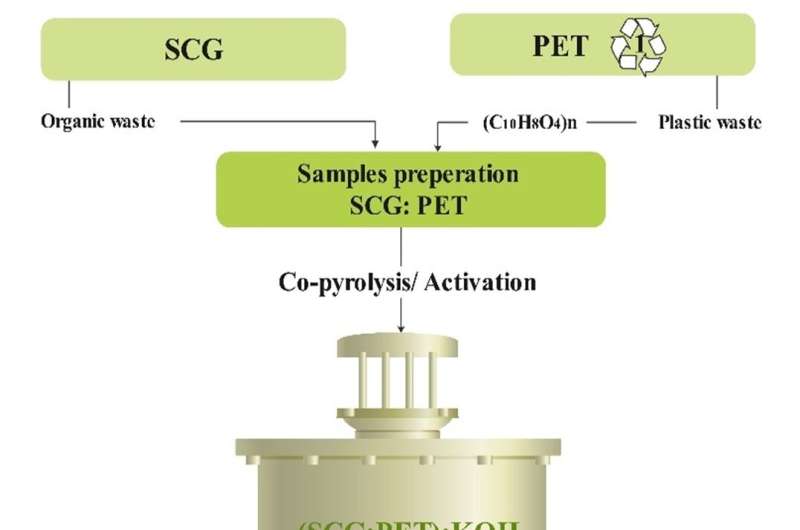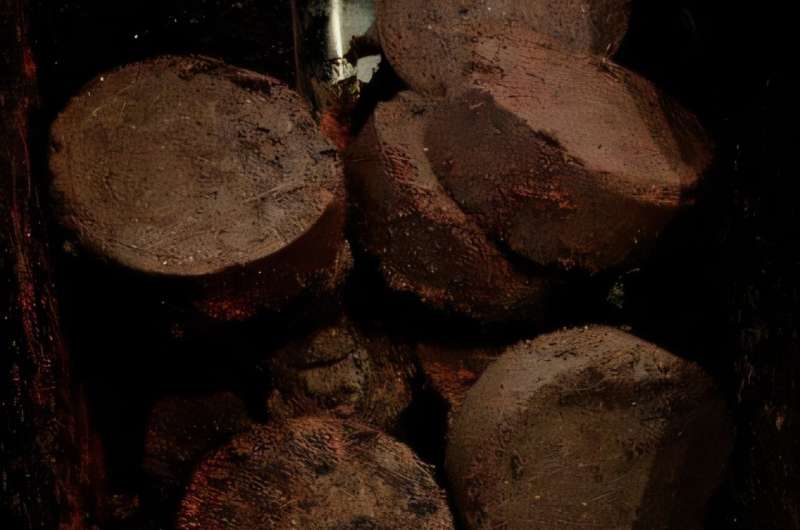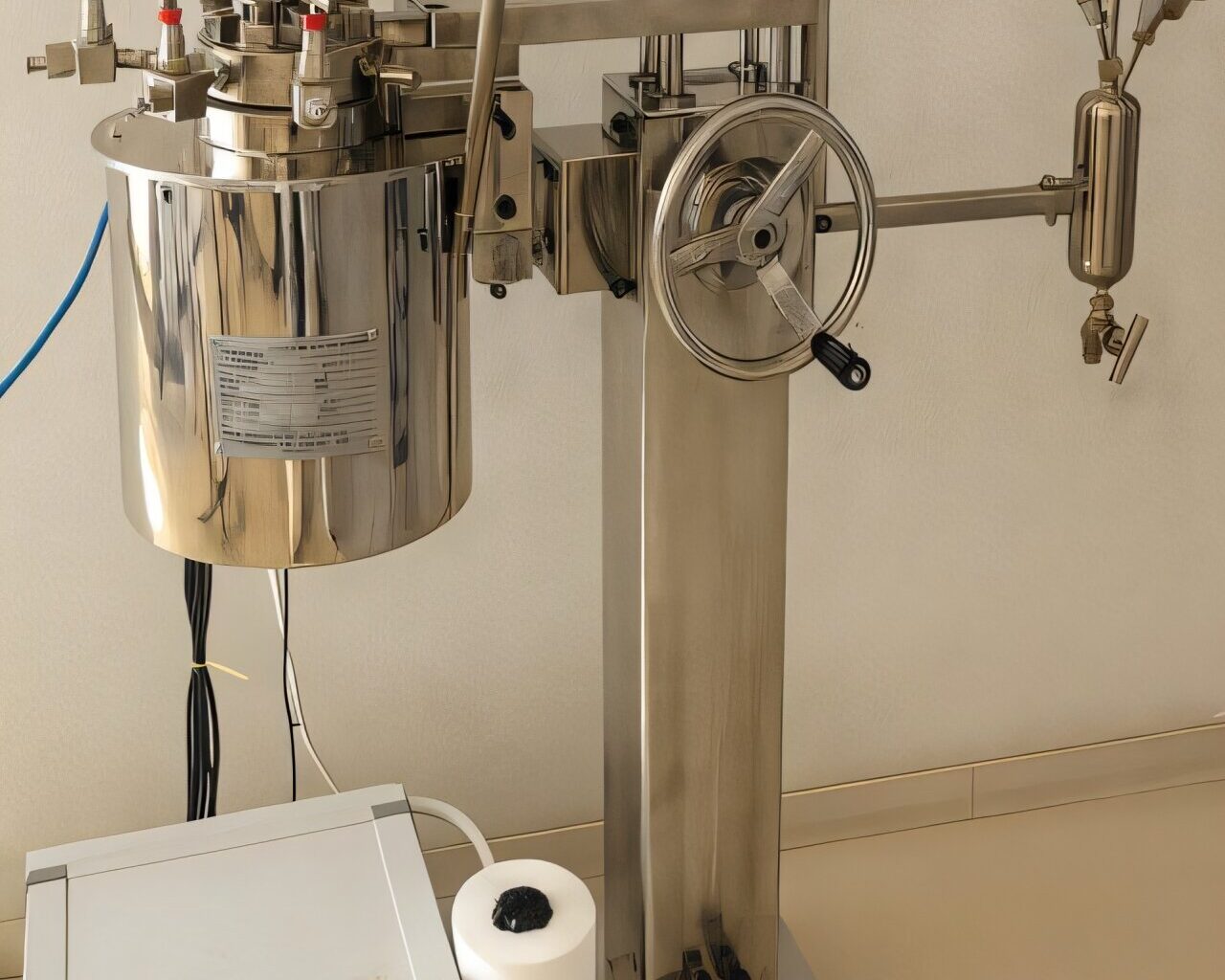
Reactor driving the carbonization of coffee and plastic waste into high-performance carbon. Credit: University of Sharjah
Researchers at the University of Sharjah have patented a technology designed to capture carbon dioxide (CO₂) from industrial processes before it is released into the atmosphere.
The patent, filed in March 2025 and published in August, outlines a novel and highly detailed method with promising potential to reduce environmental pollution, industrial emissions, and anthropogenic CO₂.
This approach utilizes a blend of spent coffee grounds (SCG), polyethylene terephthalate (PET), a common plastic used in packaging, and potassium hydroxide, a strong alkaline chemical. Together, these components form an effective material for CO₂ adsorption.
Globally, an estimated 8 million tons of spent coffee grounds are discarded annually, mostly ending up in landfills where they emit methane and other greenhouse gases. By repurposing this waste, the new method not only captures CO₂ but also contributes to sustainable waste management.
PET, a member of the polyester family, is widely used in consumer packaging, while potassium hydroxide serves as a powerful activating agent in the process, enhancing the material’s ability to trap carbon.
This patent marks a significant step forward in the development of eco-friendly technologies aimed at mitigating climate change.
Dr. Haif Aljomard, lead inventor of the newly patented CO₂ capture technology, remarked, “What begins with a Starbucks coffee cup and a discarded plastic water bottle can become a powerful tool in the fight against climate change through the production of activated carbon.”
Dr. Aljomard explained that the innovation centers on producing activated carbon through the co-pyrolysis of spent coffee grounds and polyethylene terephthalate plastic waste, using potassium hydroxide (KOH) as the activating agent.

Coffee waste (SCG), blended with plastic waste (PET), is engineered into activated carbon for climate solutions. Credit: Haif Aljomard
The process operates at an eco-friendly activation temperature of 600°C, offering a sustainable solution that supports both waste valorization and climate change mitigation.
She emphasized that the patent presents significant findings in the synthesis of activated carbon from waste materials, highlighting the effectiveness of chemical activation, the importance of surface area and pore structure, and the waste-to-resource approach that underpins the technology.
“This invention repurposes two abundant waste streams—coffee and plastic—into a high-performance adsorbent,” Dr. Aljomard said. “The resulting activated carbon shows strong potential for capturing CO₂ from fossil fuel-based energy systems, contributing to the reduction of air pollution.”
The inventors report that their method yields activated carbon with high CO₂ adsorption capacity, making it suitable for industrial applications. They also underscore the low production costs, thanks to the affordability and availability of raw materials.

Coffee waste from Starbucks in Dubai, UAE, co-pyrolyzed with PET plastics to produce activated carbon for CO₂ capture. Credit: Haif Aljomard
Co-inventor Professor Chaouki Ghenai, a specialist in Sustainable and Renewable Energy at the University of Sharjah, added, “This invention exemplifies circular economy principles by integrating waste streams for dual valorization and upcycling into valuable products.”
Discover the latest in science, tech, and space with over 100,000 subscribers who rely on Phys.org for daily insights.
Sign up for our free newsletter and get updates on breakthroughs,
innovations, and research that matter—daily or weekly.
“Transforming spent coffee grounds and plastic waste into high-quality activated carbon offers economic, social, and environmental benefits,” he said. “Through carbonization and chemical activation, we eliminate the need to landfill these materials, protecting the environment from their harmful effects.”
Summarizing the significance of the newly patented technology, Professor Ghenai emphasized its wide-ranging potential across various industrial sectors. He highlighted applications in water and air treatment, food processing, chemical engineering, and energy systems, positioning the invention as a versatile and sustainable solution.
Once the patent transitions into industrial deployment, the researchers are confident in its ability to remove contaminants and pollutants in numerous settings, including in a wide range of water treatment processes.
The inventors cited a variety of industrial operations that can benefit from their inventions, such as gas purification, drinking water filtration, groundwater remediation, service and boiler feed water treatment, as well as swimming pool, aquarium, wastewater, and sewage treatment systems.
Beyond water and air purification, the inventors anticipate significant applications in the energy sector, including solvent recovery, natural gas purification, flue gas cleaning at waste incineration plants, exhaust air treatment, process gas purification, pollutant removal, and emission control.
Together, these capabilities position technology as a versatile solution for reducing environmental impact across multiple industrial domains.
The patent describes carbon dioxide (CO₂) as one of the primary greenhouse gases driving global warming and climate change. It warns that rising atmospheric CO₂ levels pose serious risks to both the environment and human health.
“There is an urgent need for effective and sustainable technologies to capture and reduce CO₂ emissions from sources such as fossil fuel combustion, industrial processes, and power generation,” the document states.
More information:
patents.google.com/patent/US12391556B1/en
Provided by
University of Sharjah
Citation:
Researchers turn coffee and plastic waste into climate solution (2025, October 6)
retrieved 7 October 2025
from https://phys.org/news/2025-10-coffee-plastic-climate-solution.html
This document is subject to copyright. Apart from any fair dealing for the purpose of private study or research, no
part may be reproduced without the written permission. The content is provided for information purposes only.

